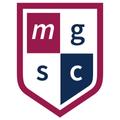Visual Communication Design

Students will be responsible for purchasing their own equipment and materials where there requirements extend beyond the basic supplies provided by the school.
Unit 1:Finding, reframing and resolving design problems
In this unit students are introduced to the practices and processes used by designers to identify, reframe and resolve human-centred design problems. They learn how design can improve life and living for people, communities and societies, and how understandings of good design have changed over time. Students learn the value of human-centred research methods, working collaboratively to discover design problems and understand the perspectives of stakeholders. They draw on these new insights to determine communication needs and prepare design criteria in the form of a brief.
Practical projects in Unit 1 focus on the design of messages and objects, while introducing the role of visual language in communicating ideas and information. Students participate in critiques by sharing ideas in progress and both delivering and responding to feedback. Students learn to apply the Develop and Deliver phases of the VCD design process and use methods, media and materials typically employed in the specialist fields of communication and industrial design. Student projects invite exploration of brand strategy and product development, while promoting sustainable and circular design practices. They also consider how design decisions are shaped by economic, technological, cultural, environmental and social factors, and the potential for design to instigate change.
On completion of this unit, students should be able to:
- Use human-centred research methods to reframe a design problem and identify a communication need.
- Create visual language for a business or brand using the Develop and Deliver stages of the VCD design process.
- Develop a sustainable object, considering design’s influence and factors that influence design.
Unit 2: Design contexts and connections
Unit 2 builds on understandings of visual communication practices developed in Unit 1. Students draw on conceptions of good design, human-centred research methods and influential design factors as they revisit the VCD design process, applying the model in its entirety. Practical tasks across the unit focus on the design of environments and interactive experiences. Students adopt the practices of design specialists working in fields such as architecture, landscape architecture and interior design, while discovering the role of the interactive designer in the realm of user-experience (UX). Methods, media and materials are explored together with the design elements and principles, as students develop spaces and interfaces that respond to both contextual factors and user needs.
Student learning activities highlight the connections between design and its context, and the emotive potential of interactive design experiences in both physical and digital spaces. Students also look to historical movements and cultural design traditions as sources of inspiration, and in doing so consider how design from other times and places might influence designing for the future. Design critiques continue to feature as an integral component of design processes, with students refining skills in articulating and justifying design decisions, and both giving and receiving constructive feedback.
Connections between design, time and place are also central to the study of culturally appropriate design practices in Area of Study 2. Students learn about protocols for the creation and commercial use of Indigenous knowledge in design, with a particular focus on Aboriginal and Torres Strait Islander design traditions and practices. Students also consider how issues of ownership and intellectual property impact the work of designers across contexts and specialist fields.
On completion of this unit, students should be able to:
- Present an environmental design solution that draws inspiration from its context and a chosen design style.
- Apply culturally appropriate design practices and an understanding of the designer’s ethical and legal responsibilities when designing personal iconography.
- Apply the VCD design process to design an interface for a digital product, environment or service.
Unit 3: Visual communication in design practice
In this unit students explore, experience and respond to design problems and conceptions of good design. They investigate the ways in which designers work, while also analysing the work that they design. Through a study of contemporary designers practicing in one or more fields of design practice, students gain deep insights into the processes used to design messages, objects, environments and/or interactive experiences. They compare the contexts in which designers work, together with their relationships, responsibilities and the role of visual language when communicating and resolving design ideas. Students address human centered design, a selected problem, defining two distinct communication needs in the discovery, define and deliver stages of the double diamond VCD design process.
On completion of this unit, students will be able to:
- Investigate how and where designers work, identifying the role of visual communication in professional design practice.
- Experiment with visual communication practices typically used in their selected field(s) of practice.
- Analyse the aesthetic decisions made by designers when producing messages, objects, environments or interactive experiences.
- Explore the Discover, Define and Deliver phases of the VCD design process and apply understanding of good design when addressing a selected design problem.
Unit 4: Delivering design solutions
In this unit students continue to explore the VCD design process, resolving design concepts and presenting solutions for two distinct communication needs. Ideas developed in Unit 3, Outcome 3 are evaluated, selected, refined and shared with others for further review. Students select materials, methods and media appropriate for the presentation of final design solutions distinct from one another in purpose and presentation format, and that address design criteria specified in the brief.
On completion of this unit, students will be able to:
- Refine and resolve distinct design concepts for each communication need, evaluating the extent to which these meet the requirements of the brief.
- Produce a design solution for each communication need defined in the brief, satisfying the specified design criteria.
